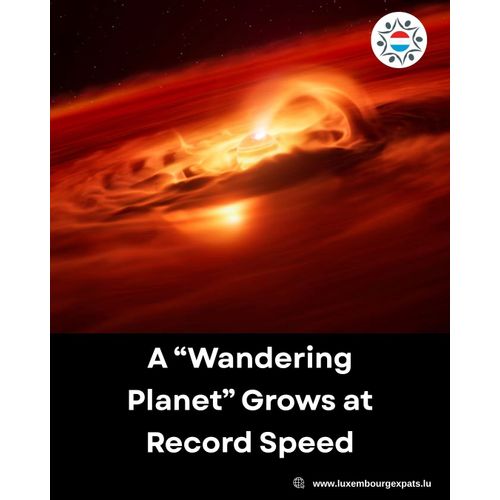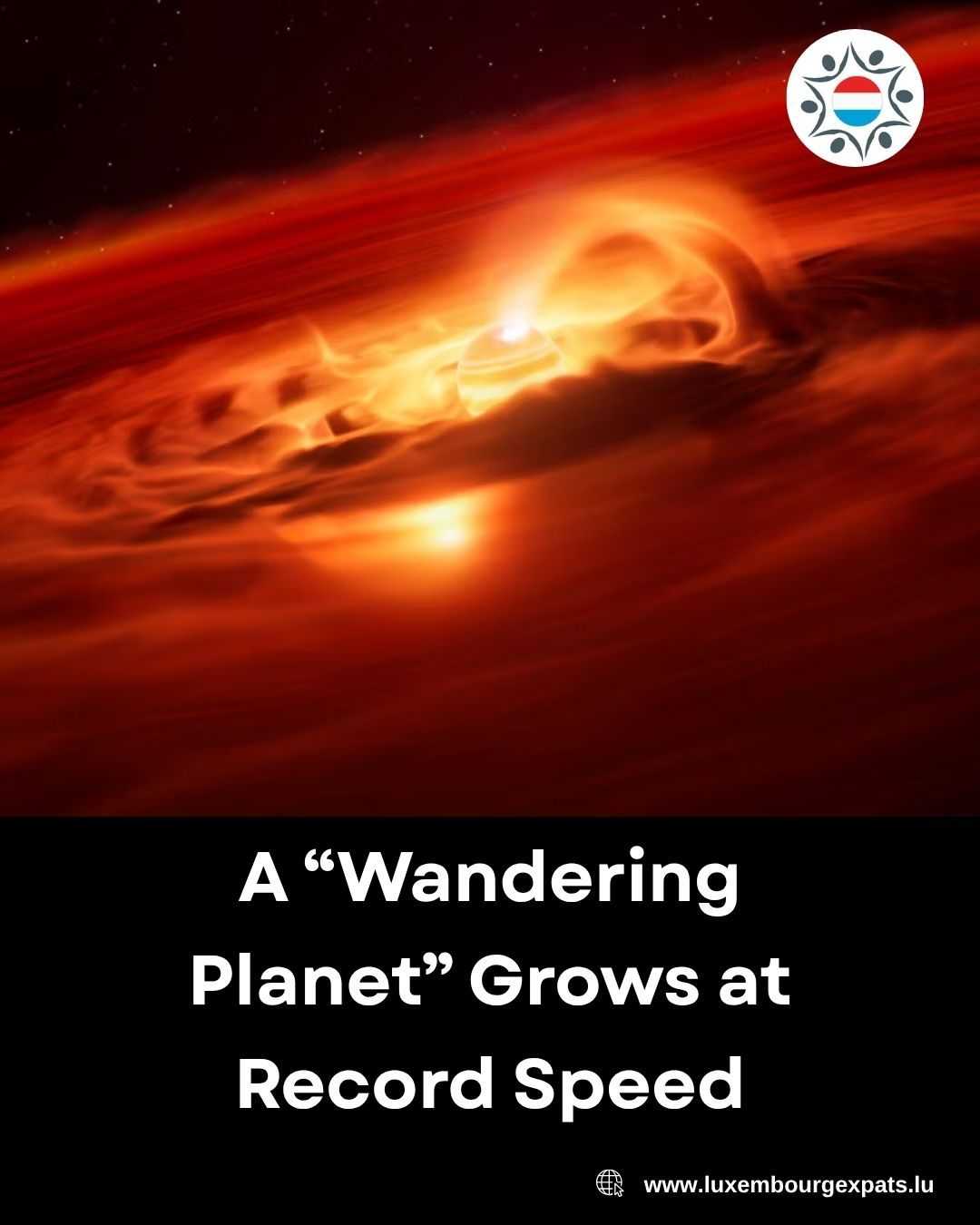A “Wandering Planet” Grows at Record Speed, Swallowing Six Billion Tons of Gas per Second
LuxembourgPosted on 06 October 2025 by TeamAstronomers have observed an extraordinary cosmic event: a free-floating “wandering planet” that is devouring gas and dust at an unprecedented rate of six billion tons per second. The discovery, made using data from the European Southern Observatory’s Very Large Telescope (VLT) in Chile and the James Webb Space Telescope (JWST), challenges our understanding of how planets and stars form — and where the boundary between the two truly lies.
A Planet Without a Star
The object, named Cha 1107-7626, is located about 620 light-years away in the Chamaeleon constellation. Unlike planets such as Earth or Jupiter, which orbit stars, Cha 1107-7626 drifts freely through space — a so-called “wandering” or “rogue planet.” It is estimated to be five to ten times more massive than Jupiter and between one and two million years old, still in the early stages of formation.
“This is the most intense accretion rate ever observed for a planetary-mass object,” said Victor Almendros-Abad, lead author of the study and astronomer at the Palermo Observatory in Italy. “We are witnessing a growth process that looks remarkably similar to what happens in young stars.”
Blurring the Line Between Planets and Stars
According to Alexander Scholz, astronomer at the University of St Andrews and co-author of the study, this discovery “blurs the boundary” between planets and stars. The planet’s rapid growth is fueled by a surrounding disk of gas and dust — a structure typically found around newborn stars.
Scientists observed that, during a sudden “eruption” in August 2024, the rate at which Cha 1107-7626 absorbed material increased eightfold. The process also triggered magnetic activity and changes in the disk’s chemistry, including the appearance of water vapor — phenomena previously seen only in stellar formation.
“These findings suggest that some giant, planet-like objects might actually form like stars,” said Ray Jayawardhana of Johns Hopkins University, one of the study’s co-authors. “They condense from clouds of gas and dust, develop their own disks, and go through bursts of rapid growth.”
A Star-Like Planet
Despite behaving like a star, Cha 1107-7626 lacks the mass required to ignite nuclear fusion at its core. Over time, it will cool and fade, remaining a massive, isolated planet-like body adrift in space.
“The idea that a planetary object can behave like a star is fascinating,” said Amelia Bayo, astronomer at the European Southern Observatory. “It pushes us to rethink how planetary systems evolve and what kinds of worlds might exist beyond our own.”
The study, published in The Astrophysical Journal Letters, opens new perspectives on the mysterious population of trillions of wandering planets thought to drift through the Milky Way — and offers a glimpse into the complex, overlapping processes that give rise to both planets and stars.
Join the community of your own - #1 home-grown LuxExpats app
SignUp Free : luxembourgexpats.lu
I am your contact
Team
Chat









